- Leisure Marine
- Maritime, Commercial & Defence
- Boats and Outboards
- Construction Materials
- Engines and Propulsion Systems
- Marina and Yard
- Marine Electronics
- Safety Equipment
- People on the move
- Shows & Events

Baltic Yachts announces first multihull project
Monday, September 9th, 2024
Written by: Marine Industry News
Finnish sailing yacht builder Baltic Yachts is set to enter the multihull market. The company will reveal details of its first-ever multihull project at the upcoming Monaco Yacht Show (25-28 September).
Construction of the new yacht is scheduled to begin this month, with design and engineering phases already well underway. The shipyard will release more information about the project before the Monaco Yacht Show begins.
The firm’s newly appointed CEO, Tom von Bonsdorff , along with EVP Henry Hawkins and sales director Kenneth Nyfelt, will be available for meetings at the show.
The shipyard will also showcase the Baltic 85 Mini Y, a 26-metre cruising sloop designed by Bill Dixon. The yacht, currently for sale through Edmiston, features high sailing performance, easy handling, and a four-guest layout with a spacious owner’s suite.
Recent deliveries from Baltic Yachts include the Baltic 80 Emma , a maxi cruiser-racer, and the third Baltic 68 Café Racer. The company also completed a significant refit of the Baltic 175 Ravenger , transforming the world’s largest full-carbon composite sloop from a cruiser into a high-performance sailing yacht.
Upcoming projects include the Baltic 121 Custom, a world cruiser designed by Malcolm McKeon set for 2026 delivery, and the fourth hull in the Baltic 68 Café Racer series.
Earlier this year, Baltic Yachts consolidated its operations at a new waterfront facility in Jakobstad, Finland. The firm reported this move to improve efficiency and reduce its production footprint.
Baltic’s EVP Henry Hawkins says: “It’s an exciting time here at Baltic Yachts with another major milestone project about to start and the whole team beginning to see real benefits and opportunities now that we’re fully moved into our new, state-of-the art production base.
“And we’re looking forward to Monaco Yacht Show, which is always a great place to catch up and connect with many of our clients and partners.”
Image courtesy of B altic Yachts.
- Superyacht latest news ,
- Monaco Yacht Show

New superyacht golf domes and inflatables launch from FunAir
Leave a reply cancel reply.
Your email address will not be published. Required fields are marked *

MIN magazine
Dive into MIN’s print edition which is now online for your convenience. More stories, more in-depth features, more product news and more exclusive interviews. Enjoy thoughtful analysis of the marine trade sector from across the world and get onboard with new trends.


- AMERICA'S CUP
- CLASSIFIEDS
- NEWSLETTERS
- SUBMIT NEWS

Baltic's first multihull and Monaco Yacht Show

Related Articles
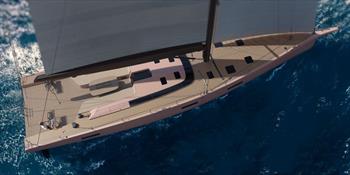

- Subscriptions
Grab a Seat at the Captain’s Table
Essential news coupled with the finest maritime content sourced from across the globe.
Join our crew and become one of the 108,302 members that receive our newsletter.

Disney Treasure cruise ship is seen at luxury shipbuilder Meyer Werft on the day of the visit of German Chancellor Olaf Scholz (not pictured), in Papenburg, Germany, August 22, 2024. REUTERS/Carmen Jaspersen
Germany Agrees To Rescue Cruise Ship Builder Meyer Werft
Share this article.
By Kamil Kowalcze
Sep 6, 2024 (Bloomberg) –Germany hammered out a deal that offers a potential lifeline for struggling shipbuilder Meyer Werft GmbH, the privately-held company that recently won a follow-on contract to supply vessels for Disney Cruise Line ’s fleet.
The federal government will acquire a 40% stake in Meyer Werft along with “a stake of the same amount by the state of Lower Saxony,” according to Economy Ministry officials. The financing for the federal government amounts to around €200 million ($222 million).
The government and Lower Saxony will “also guarantee 80% of a debt capital credit line totaling €2.6 billion,” they said. “The banks assume 20% at their own risk.”
Chancellor Olaf Scholz visited the manufacturer last month and voiced optimism that a solution can be found in talks with banks, adding that Germany’s lower house of parliament in Berlin and the European Commission would also be involved to get the deal approved.
The storied Papenburg-based shipyard, owned in the seventh generation by the Meyer family, employs about 3,300 people. It ran into trouble during the Covid-19 pandemic and banks started to question its creditworthiness. A large chunk of the purchase price for cruise ships is only paid when vessels are handed over to customers, making interim financing essential.
“It’s the firm determination of the government — of me personally and of my ministry, which is doing the work here — that Meyer Werft gets the support it requires to continue to build ships,” Economy Minister Robert Habeck said on Friday.
The rescue comes amid a prolonged downturn in the German manufacturing sector , which impacts Europe’s biggest economy as a whole.
Apart from its main shipbuilding operations, Meyer Werft is also involved in a key project in Germany’s shift toward renewable energy. The company helps to build large converter platforms near the Baltic port of Rostock that are needed to feed electricity from offshore wind parks into the grid.
Meyer Werft on Aug. 12 announced a new contract to build four more ships for the Disney Cruise Line on top of the four already in its order book.
© 2024 Bloomberg L.P.
Unlock Exclusive Insights Today!
Join the gCaptain Club for curated content, insider opinions, and vibrant community discussions.
Be the First to Know

Join the 108,302 members that receive our newsletter.
Have a news tip? Let us know.
Stay Ahead with Our Weekly ‘Dispatch’ Email
Dive into a sea of curated content with our weekly ‘Dispatch’ email. Your personal maritime briefing awaits!
Related Articles
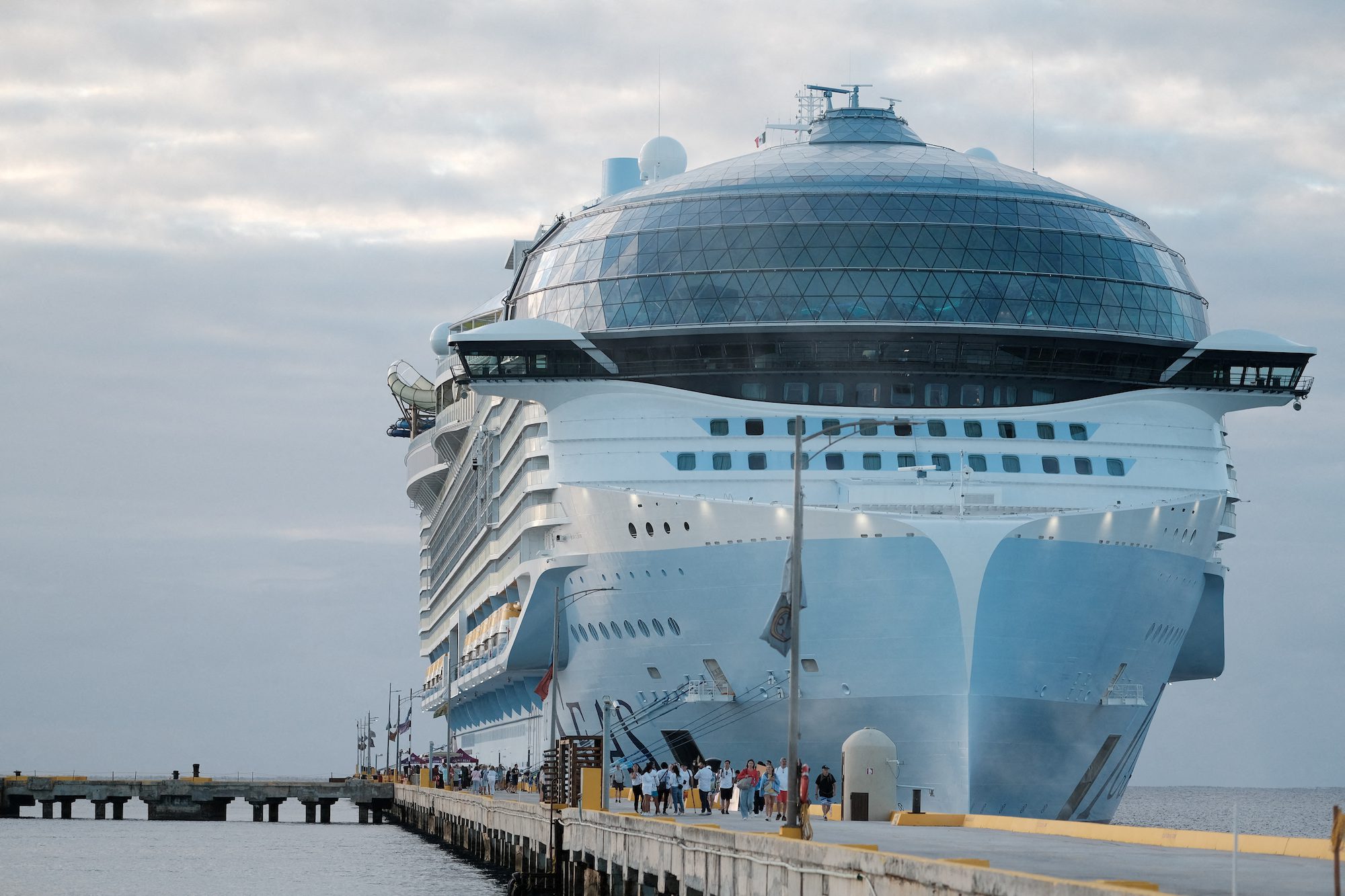
Royal Caribbean Orders Fourth Icon Class Ship, with Options
Royal Caribbean Group has announced an agreement with Finnish shipbuilder Meyer Turku to order a fourth Icon Class ship, scheduled for delivery in 2027. The agreement also includes options for...
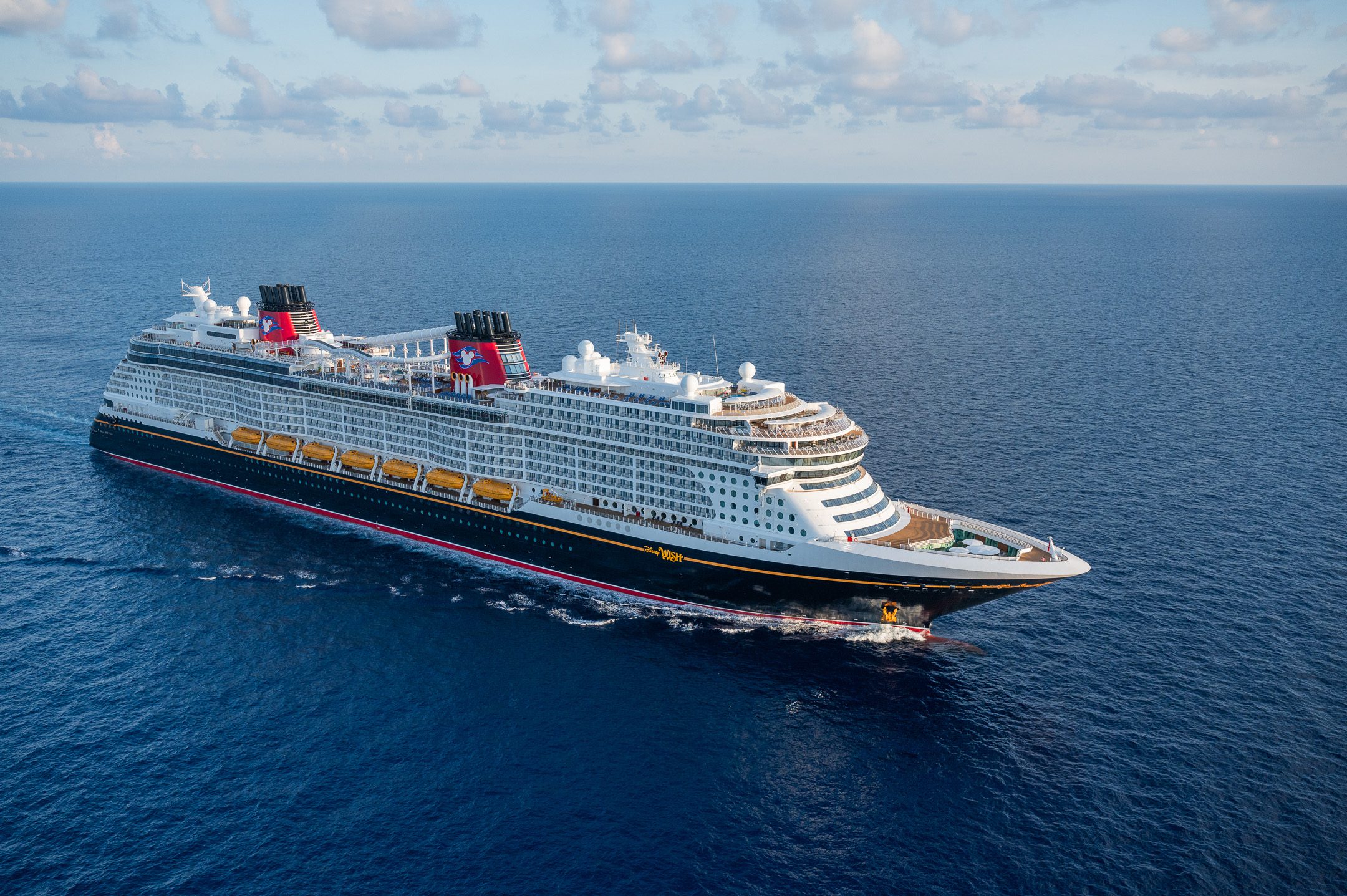
Disney Cruise Line Adds to Orderbook at Meyer Werft
Disney Cruise Line is set to expand its fleet with the addition of four new ships. The four ships will be constructed by Meyer Werft in Papenburg, Germany, and are...

Norwegian Cruise Lifts Annual Profit Forecast Again as Cruise Demand Soars
By Granth Vanaik July 31 (Reuters) – Norwegian Cruise Line Holdings on Wednesday raised its annual profit forecast for a third time, riding on sustained demand for luxury voyages and higher ticket prices....

Why Join the gCaptain Club?
Access exclusive insights, engage in vibrant discussions, and gain perspectives from our CEO.

OUT AT SEA?
We’ve got you covered with trusted maritime and offshore news from wherever you are.
JOIN OUR CREW
Maritime and offshore news trusted by our 108,302 members delivered daily straight to your inbox.
Your Gateway to the Maritime World!
Join our crew.

Privacy Overview
Werft aus Finnland : Baltic Yachts feiert 50. Geburtstag
Sören Gehlhaus
· 28.11.2023
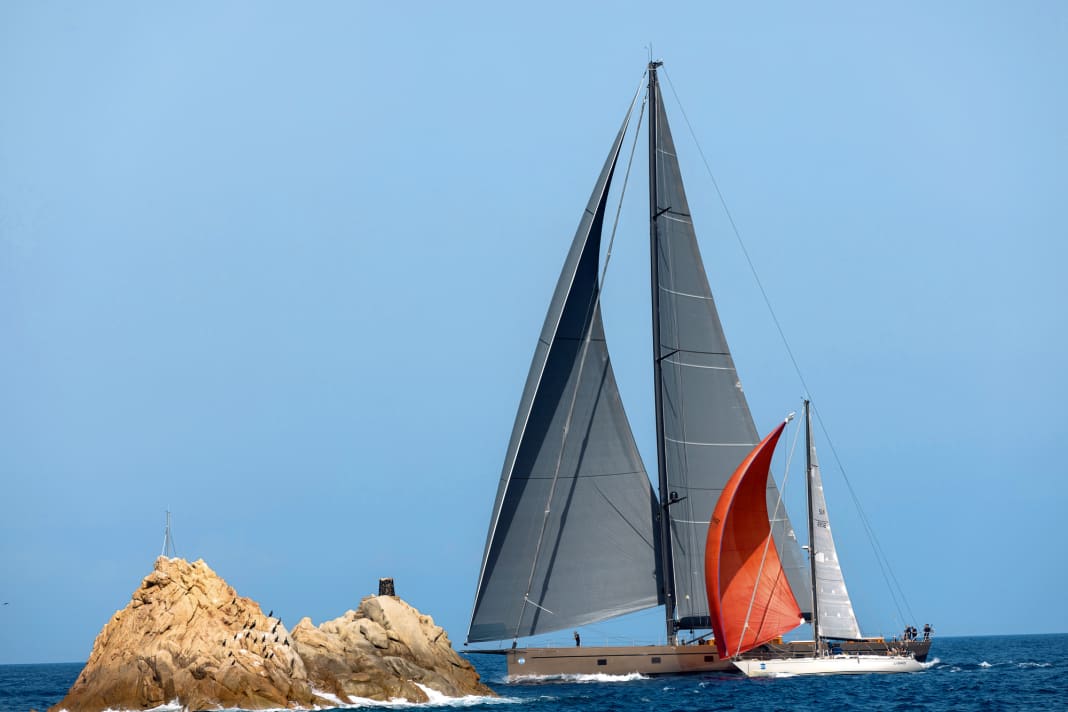
Den Winter des Jahres 1973 läutete in Bosund unaufhörlicher Schneefall ein. In 400 Kilometer nördlicher Entfernung von Helsinki setzt auch heute noch der Frost Ende September ein, und die Eisdecke verschwindet erst gute drei Monate nach der boot Düsseldorf von der Ostsee. Genau hier nahm die Unternehmung, die später unter dem Namen Baltic Yachts bekannt werden sollte, mit der Errichtung einer Rundbogenhalle ihren Lauf; umgeben von Pinienwäldern und in – wie es eine ältere Werftpublikation nennt – „herrlicher Abgeschiedenheit“.
Neben der inselreichen Küste ist die Region Ostbottnien, die jahrhundertelang zu Schweden gehörte, bekannt für ihre exzellenten Bootsbauer. Dazu zählen auch die Baltic-Gründer Per-Göran „PG“ Johansson, Tor Hinders, Nils Luoma, Ingmar Sundelin und Jan-Erik Nyfelt. Sie alle gaben ihre Arbeit bei Nautor’s Swan auf, weil man dort ihren neuen Leichtbauweg nicht mitgehen wollte.
Baltic-Schiffe im Porträt:
- Baltic 111: „Raven” erzielt mit Foils auf Anhieb 29 Knoten
- 33-Meter-Baltic “Zemi”: Worldcruiser mit Cockpit als Teak-Skulptur
- Baltic-Superyacht: „Perseverance“ – Kutter der Neuzeit
- “Pink Gin Verde”: Grüner geht’s nicht – aber leichter
- „Pink Gin VI”: Längster Carbon-Einmaster
Die Baltic-Gründer wollten leichte Yachten bauen
Der deutsche Baltic-Händler Walter Meier-Kothe erinnert sich: „PG war Projektmanager für die Swan 65 ‚Sayula‘, die er so leicht wie möglich bauen wollte. Nautor beharrte aber auf der GFK-Standardversion.“ Im Sieg von „Sayula“ beim ersten Whitbread-Race 1973/74 sah Nautor eine Bestätigung, gleichzeitig wuchs der Druck auf Johansson und seine Mitstreiter. Sie wollten die Sandwich-Bauweise mit Balsaholz-Kern und, auch das ein Novum, unidirektionalen Glasfasergelegen etablieren. Aber die fünf brauchten einen Riss und Stücklisten, also eine exakte Übersicht über alle Komponenten. Das gab keine Werft und kein Konstruktionsbüro einfach so heraus.
Meistgelesene Artikel
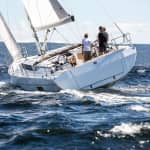
Zu der Zeit beabsichtigten die Kanadier von C&C, in Europa zu wachsen. Da Sparkman & Stephens bereits mit Nautor Erfolge auf dem alten Kontinent feierte, wollte man Vertretungen aufbauen, um die eigenen Designs von unterschiedlichen Werften bauen zu lassen. Die expansionswilligen Kanadier und die experimentierfreudigen Finnen fanden zusammen und realisierten nach Tanktests die C&C 46 „Diva“ für das kanadische Admiral’s-Cup-Team. Mit 12,1 Tonnen war sie vergleichsweise leicht, steif und schnell.
Anfänge im Admiral’s Cup
In Deutschland vertraten Michael Schmidt und Rolf Vrolijk C&C Yachts und zeigten die finnische 46 im Herbst 1974 auf der Hanseboot in Hamburg. In ihrem Dunstkreis bewegte sich auch Walter Meier -Kothe, der alsbald in das Geschäft einstieg: „Nach der Arbeit traf ich in der Segler -Villa an der Elbchaussee auf Michael Schmidt. Als Schiffsmakler hatte ich einen Anzug an, da kam ihm die Idee, dass man es mit mir versuchen könnte, die teuren Boote zu verkaufen.“
Ein C&C -Büro in Hamburg wurde eröffnet, und die Kundschaft kam. Thomas Friese orderte einen 42 Fuß langen IOR -Zweitonner, ursprünglich für den Admiral’s Cup. Doch zu den Ausscheidungs-Rennen für die 75er-Ausgabe kamen nach dem deutschen Außenseitersieg 16 Boote, und „Tina i-Punkt“ war nicht unter den drei Schiffen, die später auf dem Solent antraten. Baltic nutzte die Rumpfform für die dann 21-fach gefertigte C&C 42. Das erfolgreichste Serienmodell maß 39 Fuß und wurde innerhalb von sechs Jahren 74-mal gebaut. Es gab sogar einen 33-Fußer, aber auf den Rümpfen stand immer noch C&C.
Baltic Yachts als Vorreiter für neue Bauweisen
Mit der Verpflichtung des US-Konstrukteurs Doug Peterson wurde Baltic Yachts als eigenständige Marke aus der Taufe gehoben. Die DP-Modelle waren die ersten, die vollständig auf dem Computer entworfen wurden. Ende der siebziger Jahre ging man bereits dazu über, kleinere Teile aus Carbonfasern herzustellen. Auch das Vakuumhärten in Folien, zunächst für Ruderwellen, Skegs und zur Versteifung beanspruchter Rumpfbereiche, wurde schon praktiziert. Baltics waren schnell, und Walter Meier-Kothe erkannte die Werbewirkung von Dickschiff-Regatten: „Von Anfang an verteilten wir uns auf die von uns verkauften Boote, um gute Ergebnisse zu erzielen.“
Stetig lotete die Werft die Grenzen der Komposit-Bauweise aus, nutzte statt Balsa leichtere Kerne aus Schaum und Carbonfasern
Mit Konstruktionen von Judel/Vrolijk wuchs die Eigenständigkeit. Von der 1984 erstgewasserten Baltic 35 verließen insgesamt 45 Exemplare das finnische Bosund. Die Bremerhavener zeichneten die 63-Fuß-Racer „Saudade“ und „SiSiSi“, die aufgrund einer Anhebung der Mindestlänge auf 80 Fuß nicht in der Maxi-Klasse starten durften. Baltic gehörte mittlerweile der Hollming-Gruppe. Als die finnischen Schiffbauer den Satelliten 1990 veräußern mussten, wurden 34 Manager und Mitarbeiter, darunter PG Johansson und Jan-Erik Nyfelt, unmittelbar zu Werfteigentümern.
Leicht, aber nicht leichtsinnig
Stetig lotete Baltic die Grenzen der Komposit-Bauweise aus, nutzte statt Balsa leichtere Schaumkerne und laminierte seit Ende der achtziger Jahre Carbon- und Kevlarmatten mit Epoxidharz und unter Vakuum. Fünf Jahre später legte der erste Supersegler ab, die von einem Deutschen bereederte „Anny“. Die 26 Meter sahen mit Deckshaus und Targabügel nach Cruising aus, nahmen aber rege an den aufkommenden Superyacht-Regatten teil. Mit der Baltic 67 „Aledoa 4“ baute man 1996 den ersten Cruiser-Racer nahezu vollständig aus Prepreg-Carbon. Die vorimprägnierten Kohlefasern kamen kurz darauf für „Loftfari“ auch auf Nomex-Kernen im Innenausbau zum Einsatz.
Der gleiche deutsche Eigner, SAP-Mitbegründer Hasso Plattner, nahm 2002 die fast 45 Meter lange „Visione“ entgegen. Eine Bau-Anekdote besagt, dass der Tender abgelehnt wurde, weil er nur wenige Kilogramm schwerer war, als vom Zulieferer spezifiziert. Den feinen Sinn für das Leichte, der nie in Leichtsinnigkeit übergeht, bewahrte sich Baltic immer. Den Canting Keel führte man 2000 an der Baltic 78 mit unter der Wasserlinie liegender Mechanik und Hydraulik ein.
Finanzkrise macht auch vor Baltic Yachts nicht halt
Nach diversen Erweiterungen in Bosund wurde 2010 ein zusätzlicher Standort am Wasser im 20 Kilometer nördlich gelegenen Jakobstad errichtet, wo ein Jahr später mit der fast 60 Meter messenden „Hetairos“ die größte Komposit-Segelyacht der Welt ablegte. Doch die Auswirkungen der Finanzkrise machten auch vor Baltic Yachts nicht halt. Trotz guter Auftragslage gab es keine Bankgarantien mehr.
Eigner wurden zu mobilisieren versucht. „PG kontaktierte aus dem Ruhestand Hans Georg Näder“, entsinnt sich Walter Meier-Kothe. Der Händler hatte dem Orthopädietechnik-Unternehmer 1999 zu seiner ersten 30-Meter-Baltic verholfen, natürlich namens „Pink Gin“. Im März 2013 erwarb Näder über die Ottobock Holding 80 Prozent der Firmen-Anteile. Zu dem Zeitpunkt segelte er auf 46 Metern (2006). Die 54 Meter lange und kürzlich verkaufte „Pink Gin VI“ sorgte 2017 mit Hai-Kielbombe für Aufsehen.
Das 50-jährige Jubiläum feierte Baltic mit einem Mittsommer-Fest und einer Regatta vor Sardinien, wo die Ur-Baltic „Diva“ als überholte „Queen Anne“ antrat. Nächstes Jahr macht die Werft sich ein verspätetes Geschenk, das etwas wehmütig stimmt. Die dann abgeschlossene Kapazitätserweiterung in Jakobstad geht einher mit der Schließung des Gründungsstandorts in Bosund.
- Besuch bei Michael Schmidt und seiner Werft YYachts
- Besuch bei Robertson & Caine – Kapstadts Traumfabrik
- Zu Besuch bei Pendennis in Cornwall
- Wie Hanjo Runde Hanseyachts noch erfolgreicher machen will
Meistgelesen in der Rubrik Yachten

This article was originally published by Hakai Magazine .
Aboard the Alkor, a 55-meter oceanographic vessel anchored in the Baltic Sea several kilometers from the German port city of Kiel, the engineer Henrik Schönheit grips a joystick-like lever in his fist. He nudges the lever up, and a one-of-a-kind robotic sea crawler about the size of a two-seat golf cart responds, creeping forward along the seafloor on rubber caterpillar tracks 12 meters below the ship. As the crawler inspects Kiel Bay’s sandy terrain, a live video stream beams up to a computer screen in a cramped room aboard the ship. The picture is so crystalline that it’s possible to count the tentacles of a translucent jellyfish floating past the camera. A scrum of scientists and technicians ooh and aah as they huddle around the screen, peering over Schönheit’s shoulder.
The bright-yellow robot is the Norppa 300, the newest fabrication of the explosive-ordnance-disposal company SeaTerra, which operates out of northern Germany. SeaTerra’s co-founder Dieter Guldin rates as one of Europe’s canniest experts for salvaging sunken explosives. Now, after years of experience clearing the seafloor of hazards for commercial operations, and campaigning the German government for large-scale remediation, SeaTerra is one of three companies participating in the first-ever mission to systematically clear munitions off a seafloor in the name of environmental protection. The arduous and exacting process of removing and destroying more than 1.5 million tonnes of volatile munitions from the Baltic and North Sea basins—an area roughly the size of West Virginia—is more urgent by the day: The weapons, which have killed hundreds of people who have come into accidental contact with them in the past, are now corroded. Their casings are breaking apart and releasing carcinogens into the seas.
SeaTerra’s top technicians aboard the Alkor are testing the Norppa 300’s basic functions in the wild prior to the project’s start early this month: ensuring that its steering, sonar imaging of the seafloor, chemical sampler, and video feed are fine-tuned. Everyone huddled in the ship’s dry lab watches rapt as the crawler bumps up against a vaguely rectangular object the size of a bar fridge. It’s largely obscured by seaweed and, from the looks of it, home to a lone Baltic flounder that’s swimming around the base. Aaron Beck, a senior scientist at the Geomar Helmholtz Centre for Ocean Research, a German marine-research institute working alongside SeaTerra, identifies it as an ammunition crate. “Look, the flatness there, the corner. That’s not of the natural world,” he exclaims.
Dumped munitions lie in waters across the world but are ubiquitous in German waters. In the aftermath of the Second World War, all the conflict parties, including the United Kingdom, Russia, Japan, and the United States, had to divest themselves of armaments. “They didn’t want [them] on land, and facilities to destroy [them] were too few,” explains Anita Künitzer of the German Environment Agency. Dumping at sea, a practice held over from the First World War, was the obvious choice .
In occupied Germany, British forces established underwater disposal zones—one of which lies near Kiel Bay. “But,” says Guldin, “on their way to the designated dumping grounds, they also just threw hardware overboard.” Grainy black-and-white film footage shows British sailors busily operating multiple conveyor belts to cast crate after crate of leftovers into the sea. Whole ships and submarines packed with live munitions were scuttled in the rush to disarm the Germans .
Experts estimate that a ginormous 1.6 million tonnes of conventional munitions and another 5,000 tonnes of chemical weapons lie decomposing off Germany alone in the North and Baltic Seas, most from the Second World War. (Because of its busy ports, the North Sea received four times as much as the Baltic.) If all that weaponry were lined up, it would stretch from Paris to Moscow, about 2,500 kilometers. “Nowhere in German waters is there a square kilometer of seabed without munitions,” says Guldin.
In the postwar decades, freelancing scrap-metal collectors hauled explosives and other valuable wartime debris ashore to hawk on the metals market. Fisher boats that ensnared unexploded munition in their nets were required to turn them in to coastal authorities, not toss them overboard again. The German navy’s anti-mine units attempted to clear some of the mess, usually through initiating underwater explosions, but lacked the proper equipment to tackle the problem systematically. Only when the private sector picked up operations did a whole new suite of technology and skill sets emerge.
Since the late 2000s, SeaTerra’s marine biologists, hydraulic specialists, sedimentologists, divers, engineers, geophysicists, marine surveyors, pyrotechnicians, and archaeologists—now about 160 people—have been mapping the sunken armaments as they worked to clear safe patches of seafloor for wind-farm, cable, and pipeline projects.
But until this year, SeaTerra never possessed the remit it has long coveted: to begin systematically ameliorating the seafloor for the sake of marine ecosystems—and the people dependent on them. The German government has set aside 100 million euros to remove the toxic mess from the Bay of Lübeck, off the Baltic port city of Lübeck, southeast of Kiel, as a pilot project. “No other country in the world has ever attempted or achieved this,” says Tobias Goldschmidt, the region’s environment minister, in a press release.
Guldin and other advocates are elated that the project is on, but acknowledge that it will only dent the Baltic’s total quantity of submerged ordnance. Their goal is to recover 50 to 80 tonnes of munitions, though the pilot’s primary purpose is for SeaTerra and the two other firms to test their technology and demonstrate to bankrollers that the job is doable. “Then it’s about scaling up and getting faster,” says Guldin.
Faster is vital, because in their watery graves, the many land and naval mines, U-boat torpedoes, depth charges, artillery shells, chemical weapons, aerial bombs, and incendiary devices have corroded over almost 80 years. The Germans, like other dumping nations, long assumed that when the casings broke down, the vast ocean would simply dissolve pollutants into harmless fractions. About 25 years ago, scientists discovered that instead, the explosives remain live and are now oozing into the ecosystem and up the food chain .
That flounder darting in front of the crawler’s camera from the Alkor’s dry lab? It almost certainly contains traces of TNT, the highly toxic compound used in explosives. The toxicologist Jennifer Strehse, from the Kiel-based Institute of Toxicology and Pharmacology for Natural Scientists, which identified the mounting pollution, says that contamination is particularly widespread in shellfish, bottom-dwelling flatfish, and other fauna that are close to the munition dumps. They’re “contaminated with carcinogens from TNT or arsenic or heavy metals like lead and mercury,” she says.
Scientists have also found toxic concentrations of TNT in Atlantic purple sea urchins, mysid crustaceans, and blue mussels . Once contaminants have escaped into the water, they can’t be recovered, Strehse points out. “So we’re working against time.”
German health experts recommend that consumers limit themselves to no more than two meals of local fish a week to reduce exposure to heavy metals, dioxins, or PCBs. The sources of most of these contaminants are industrial processes and the burning of fossil fuels; TNT does not figure into the guidelines. Nevertheless, the risk of TNT and other contaminants from weapons is enough to cause Strehse, herself, to steer clear of all Baltic Sea mussels.
The risk of immediate loss of life is also ever present. Most of the submerged weapons remain as powerful as the day they were dumped. Now rusted through, they are even more unstable—presenting a precarious obstacle to fishing boats trawling the seafloor as well as to offshore wind-farm developers, whose sprawling turbine parks are integral to Europe’s transition to clean-energy systems. In the two German seas, more than 400 people— tourists, sailors, fishers, naval cadets, and munitions experts —have lost their lives to explosions from sunken weapons.
The menace doesn’t stay at sea, either. As the munitions deteriorate, amber-colored chunks of phosphorus from incendiary bombs, fragments of TNT, or rusted casings often wash up on shore. Beachcombers who touch solid white phosphorus—usually mistaking it for Baltic amber, a sought-after gemstone—can suffer third-degree burns or worse. The chemical element sticks to human skin and can combust spontaneously when exposed to air at temperatures above 30 degrees Celsius.
Read: What would a hydrogen bomb do to the Pacific Ocean?
More than half a century after the fighting ended, the task of addressing the environmental danger and risk to life from dumped munitions has become its own battle. When Guldin entered the field of munitions cleanup in 2000, he saw the problem’s enormity and malevolent power as the ultimate challenge for his technical imagination.
Fifty-seven-year-old Guldin describes himself as a pacifist by nature and an archaeologist by training. He grew up far removed from oceans, in southern Germany’s Black Forest, where, as a conscientious objector, he refused to serve in the German army, later joining the Green Party instead. He helped excavate Roman settlements along the Rhine. Then he moved on to the Middle East, where he unearthed ancient civilizations in Yemen and Lebanon. Eventually, in 2000, he admitted to himself that the long stays abroad and one-off digs weren’t conducive to the family life he wanted. Shortly after this, he touched base with an old friend, Edgar Schwab.
Schwab, a geophysicist, was in Hamburg, Germany, and one step ahead of his buddy—starting up a little company to appropriate the lethal relics of the Third Reich from the ocean floor. The two friends were interested in digging less to explain humanity’s past than to undo the damage it had inflicted upon nature, and together they co-founded SeaTerra.
Guldin immersed himself in the history of munitions dumping in northern Europe—a practice that was discontinued worldwide only in 1975 . While SeaTerra conscientiously cleared patches of seafloor for industry, the mass of munitions across the greater seafloor gnawed at him. He insisted that his country clean it up so that future generations wouldn’t suffer this legacy of wars executed by generations past. He worked the halls of power for 10 years but couldn’t get officialdom to touch the odious issue.
The fact that the seafloor was littered with munitions has been common knowledge since 1945, but no one knew exactly how much there was, or where. SeaTerra and a smorgasbord of concerned groups , including Strehse’s institute, understood that before anybody was going to address the issue, they first had to find out exactly what they were dealing with.
In the course of its work for private companies, SeaTerra began developing technology—such as a prototype crawler, the DeepC —for surveying the seafloor, meter by excruciating meter. In the deep and churning North Sea, with its muscular tidal currents, much of the detritus lies meters beneath the seafloor. To penetrate the sediment, SeaTerra developed underwater drones and advanced multibeam radar equipment. For shallow tidal areas, SeaTerra also created low-flying drones outfitted with magnetic sensors that can detect metallic masses buried deep in the sand.
Many of SeaTerra’s innovations entailed modifying technology used in related fields, such as mining, pyrotechnics, and archaeology. The team started with a lot of energy but few resources: “In the beginning, we used zip ties and duct tape for everything,” Guldin says. The range of state-of-the-art technology the team now operates is not the brainchild of one person, but Guldin has been central to much of it.
Now, with a firm grasp of the problem and how to address it, Guldin and others at SeaTerra are itching to display their accumulated know-how in the Bay of Lübeck. “The time has now come,” he announced recently on LinkedIn. “We, the explosive-ordnance-disposal companies, can now start our real work to make the oceans cleaner … and to measure our ideas and concepts against the physical reality of this blight.” It is, his announcement says, a great success for the company and a “recognition of our many years of effort in developing new technologies and concepts for explosive ordnance at sea.”
Aboard the Alkor, the scientists believe that their star, the Norppa 300, is ready for official deployment in the Bay of Lübeck. The crawler is the culmination of years of invention, testing, and tweaking. Unlike previous undersea robots, it operates at depths up to 300 meters and can do so 24/7, even in turbulent waters. Its many functions will relieve professional divers of some of the cleanup expedition’s most perilous tasks. The robot is equipped with sonar and acoustic imaging for detecting and identifying buried munitions. Its detachable arms include a custom-designed vacuum that gingerly hoovers sediment from buried explosives and a pincer for lifting pieces of ammunition.
Read: The life and times of ocean rovers
The cleanup process for weapons that can be handled will involve three general steps using specialized ships. First, SeaTerra’s engineers and scientists on the Alkor — the survey vessel — will scan the site and classify the munitions. They will also take water samples for Geomar to analyze on board, distinguishing conventional from chemical weaponry. Chemical weapons , which contain phosgene, arsenic, and sulfur mustard (also known as mustard gas), are too lethal to handle, probably ever, Guldin admits. “You can’t see these gases or smell them,” he says, “and their detonation could blow a ship out of the water, killing a ship’s entire crew in a matter of minutes.” Those weapons will be left untouched.
Künitzer, of the German Environment Agency, adds that the Nazis’ nerve gases were designed to incapacitate the eyes, skin, and lungs of battlefield foes. “Decades underwater doesn’t dilute their potency,” she says.
If the experts determine that the material is safe enough for transportation, they’ll deploy the Norppa 300 to collect and deposit smaller items, such as grenades, into undersea wire-mesh baskets. But if the explosive specialists monitoring from the ship above determine that the weaponry still contains detonators, divers—not a robot—will be sent to detach them. This is a hazardous business that, thus far, only humans can execute.
Next, a different team on a second ship—the clearance vessel—equipped with spud legs (stakes that hold the ship in place) will use a hydraulic crane equipped with cameras to extract larger munitions, including those with corrupted casings, and drop them into undersea receptacles. The final step is for a third team to haul the cargo onto the deck of their ship—the sorting vessel—to sort, label, and package the lethal concoctions in steel tubes, and then transport them to an interim site in the Baltic Sea. There the material will be re-sunk in the tubes and stored underwater until it can be handed over to the responsible state authority, the Explosive Ordnance Disposal Service, for demolition.
The workers will have two months to clear the bay—and demonstrate that the Norppa 300 and other technologies are either up to it or not.
But a hitch will delay the destruction of all of the recovered weapons for about a year. Germany has a single major munitions-disposal facility, and it is occupied with incinerating unexploded ordnance from across the globe, not least, incredibly, Nazi-era explosives still being unearthed from construction sites. That’s why the Bay of Lübeck project’s budget includes construction of a disposal facility. The company and concept have yet to be finalized. One option is to build a floating clearance platform where robots will dissect ordnance and burn the chemical contents in a detonation chamber at temperatures of more than 1300 degrees Celsius, similar to how weapons are disposed of at the land-based facility.
There’s another snafu too. Over the years, the mounds of weaponry in the undersea dumping grounds have corroded and collapsed into one another, creating a gnarled, combustible mass of metals and explosive agents that make their recovery more complicated. The only options are to leave these or blow them up on-site. The best-case scenario is that all of the Baltic’s most hazardous conventional munitions will finally be history by 2050, and work on the North Sea will be well under way. The worst case is that funding does not materialize, and the mountains of explosives will continue to deteriorate en masse, emitting poisons.
Before the green light came to start the cleanup, Guldin was becoming doubtful that his country would ever address the mess, and thought he might have to accept that SeaTerra’s expertise would never be put to the greater task that he and Schwab had envisioned. For the foreseeable future at least, he’ll be in the thick of culminating his life’s work, undoing some of humanity’s sins on the seafloor.
About the Author
More Stories
Poland and the Uncontrollable Fury of Europe's Far Right
The Rise and Fall of Leftist Populism in Germany
Clarence Thomas Took Free Yacht Trip to Russia, Chopper Flight to Putin’s Hometown: Dems
The allegedly secret gifts were disclosed in a letter from two Democratic senators that accused Thomas of potentially committing tax fraud.

Anna Conkling


Evelyn Hockstein/Reuters
Supreme Court Justice Clarence Thomas has been accused of not disclosing a yacht trip to Russia and a private helicopter flight to a palace in President Vladimir Putin’s hometown, among a slew of other gifts and loans from businessman Harlan Crow .
Buried on page 14 of a letter that two Democratic senators sent to Attorney General Merrick Garland on Tuesday, in which they urged Garland to appoint a special counsel to probe Thomas, was an astonishing list of dozens of “likely undisclosed gifts and income” from Crow, Crow’s affiliated companies, and “other donors.”
In the letter, Sens. Sheldon Whitehouse (D-RI) and Ron Wyden (D-OR) said Thomas, one of the court’s staunchly conservative justices , even may have committed tax fraud and violated other federal laws by “secretly” accepting the gifts and income potentially worth millions.
“The Senate is not a prosecutorial body, and the Supreme Court has no fact-finding function of its own, making the executive role all the more important if there is ever to be any complete determination of the facts,” reads the letter requesting the appointment of a special prosecutor.
“We do not make this request lightly,” said the letter.
The list of potentially secret gifts also includes a loan of more than $267,000 provided by Thomas’ close friend Anthony Welters, the yacht trip to Russia from the Baltics, and the helicopter ride to Yusupov Palace in St. Petersburg. ProPublica first reported last year on the existence of extensive undisclosed gifts and lavish trips from Crow.
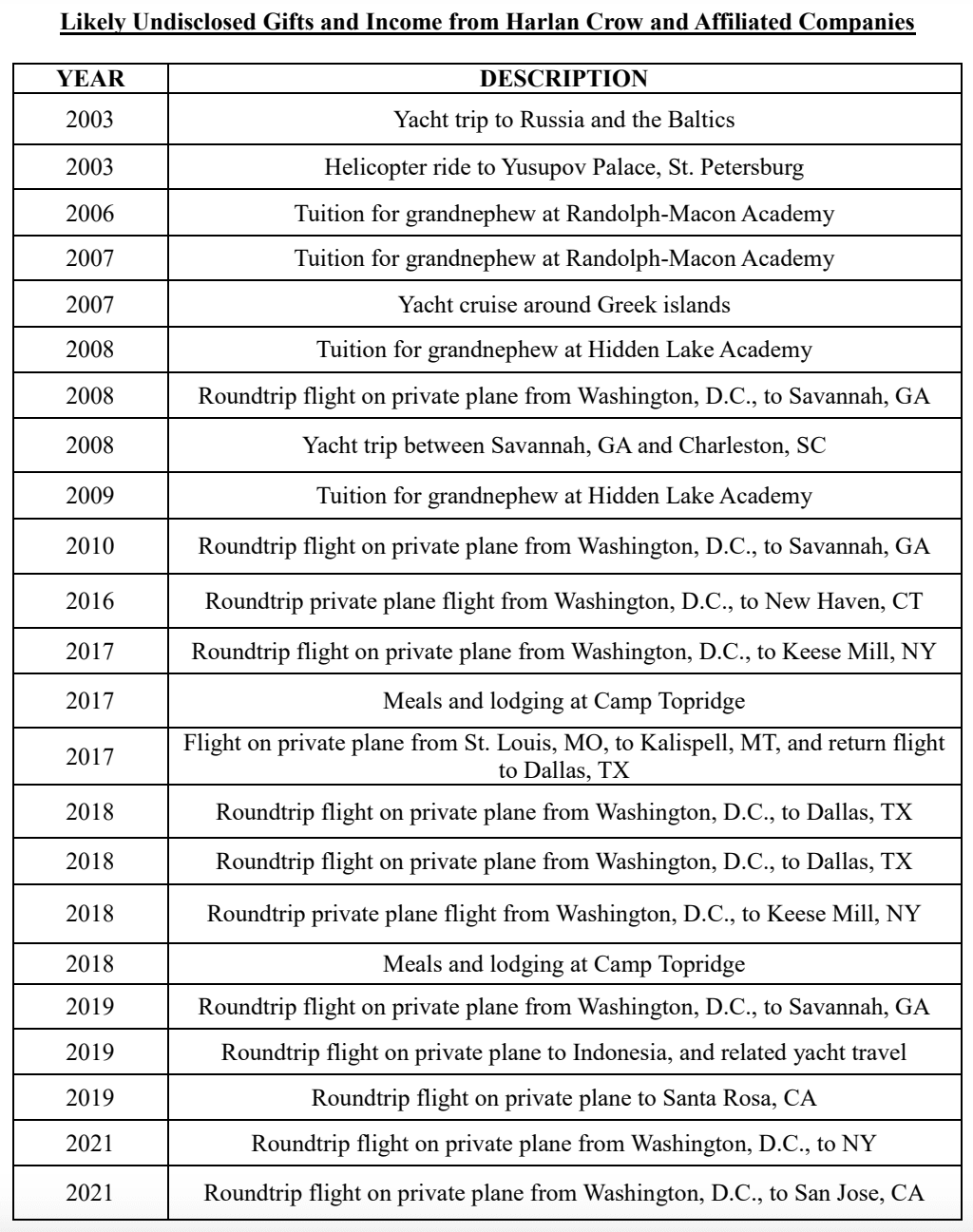
Sens. Sheldon Whitehouse and Ron Wyden
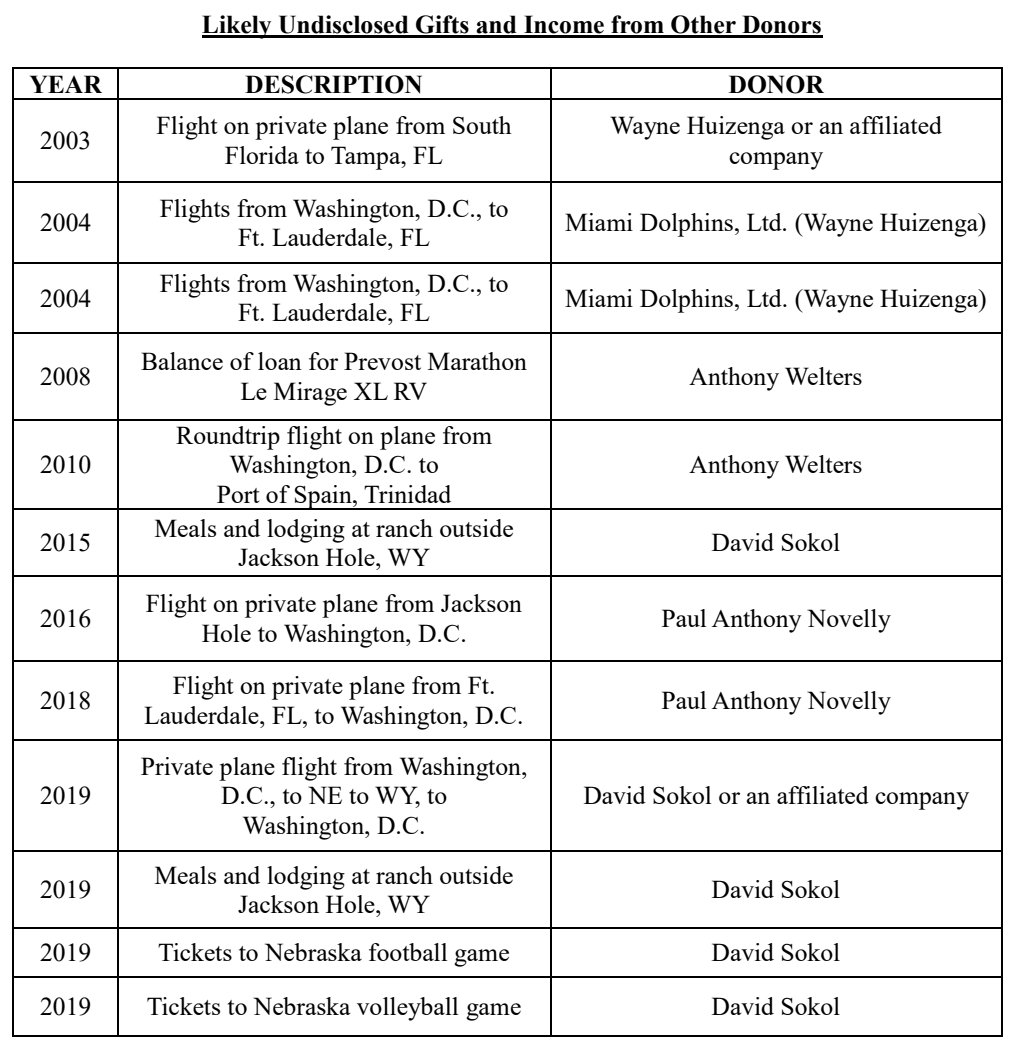
Additionally, Justice Thomas is accused of not disclosing tuitions for his grandnephew, free lodging, real estate transactions, and home renovations. The action escalates Democratic senators’ efforts to hold Thomas accountable for perceived ethics controversies.
According to the senators, Thomas’ conduct could violate the Ethics in Government Act, which requires officials like Supreme Court justices to file annual reports disclosing gifts and income accepted from outside sources.
“It is a crime,” reads the report, “To knowingly and willfully fail to file or report such information.”
Since 2023, two Senate committees have been looking into the 1991 loan from Welters that was connected to Thomas’ purchase of a luxury motor home. Welters previously responded to a New York Times request for comment on the loan only to say that it was “satisfied.”
Thomas, for his part, belatedly disclosed some—but not all—gifts from Crow this year and has defended the gifts as “personal hospitality” from some of his and his wife’s “dearest friends.”
“The evidence assembled thus far plainly suggests that Justice Thomas has committed numerous willful violations of federal ethics and false-statement laws and raises significant questions about whether he and his wealthy benefactors have,” Whitehouse and Wyden wrote.
Got a tip? Send it to The Daily Beast here .
READ THIS LIST

Charter boats - search
Balticat Werft boats for rent - with Happycharter

Livingboat Holiday

- Service & Refit
- Baltic Yachts Rendezvous
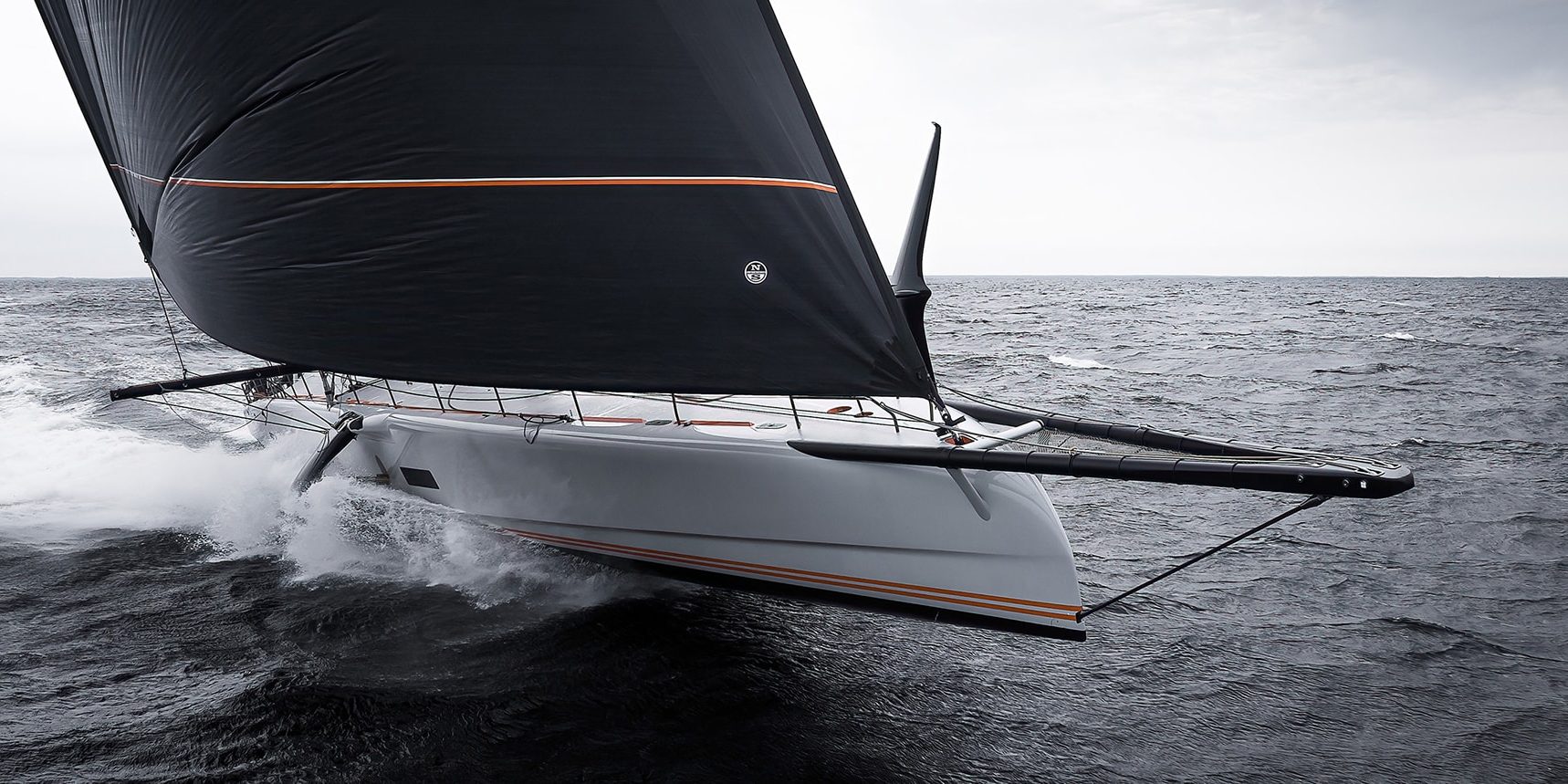
BALTIC 111 RAVEN ULTRA LIGHTWEIGHT SUPERYACHT WITH A COMFORTABLE AND STYLISH INTERIOR
Designed for fast coastal and offshore sailing, the Baltic 111 Raven has taken full advantage of Baltic Yachts’ ability to build an advanced composite structure to the most exacting standards, creating a modern, stylish living platform within a high-performance design envelope.
Baltic Yachts worked with a highly-skilled team assembled by designer Jarkko Jämsén, including in-demand Spanish race boat naval architects Botin Partners. Structural engineering by PURE Design and Engineering. Project Manager Sam Evans and project Co-ordinator Mattias Svenlin led Baltic’s internal team, while A2B Marine Projects, was the owner’s representative responsible for project management externally.
Interior and exterior design are by award-winning Finnish designer, Jarkko Jämsén. With light weight and performance the over-arching features of the project, the yacht’s interior is minimalist and modern in style.
To save weight, the yacht’s structure is used as part of the interior and materials like bamboo and rattan are featured in the finish. A luxury interior, with a fully-fitted galley and air conditioning throughout, adds to the challenge of hitting weight targets with precision.
DELIVERY YEAR
MAIN SPECIFICATIONS
- L.O.A. 34.00 m
- D.W.L. 33.10 m
- BEAM 7.40 m
- DRAFT 4.80 m
- DISPLACEMENT 55 ton (Light Craft Mass)
- INTERIOR & EXTERIOR DESIGN Jarkko Jämsén
- NAVAL ARCHITECT Botin Partners

EXTERIOR RENDERINGS

INTERIOR RENDERINGS

Here is a first glimpse from the successful sea trials in Finland when Raven finally spread her wings. The revolutionary superyacht, the first sailing yacht of her size and type to use hydrofoils mounted on adjustable side arms to support a high percentage of her displacement, will be handed over to her owner during October completing a successful two-year build and trials period.
Launch & Sea trials
Baltic 111 Raven is a remarkable study in functional and aesthetic design overlaying the most advanced sailing systems ever seen in a superyacht. Watch the final stages of Raven’s two-year build and trials period at the yard in Finland before she left for training and testing in warmer climates.
Far north, in a distant and cold climate where the isolated Finns are a people of few words, there is a long tradition of shipbuilding and exquisite handicraft. Here are also the most extraordinary, futuristic hitech yachts conceived and built based on the same principles as our ancestors. Meet Raven.
MORE ABOUT BALTIC 111 RAVEN
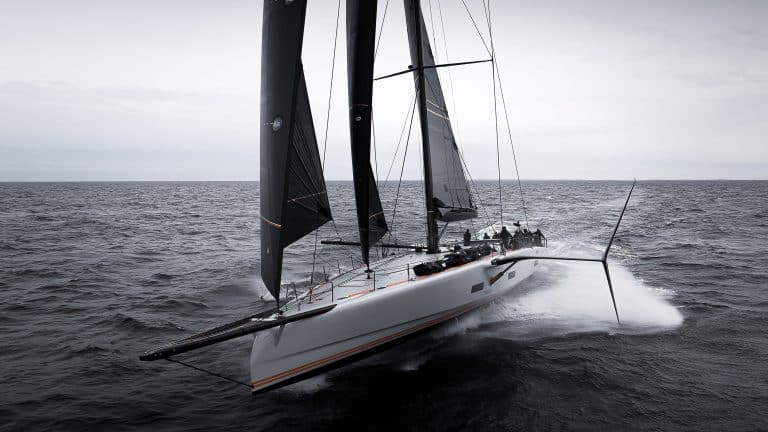
BALTIC 111 RAVEN REACHES SUSTAINED SPEEDS IN HIGH TWENTIES AS SUCCESSFUL TRIALS ARE COMPLETED IN FINLAND
Early sailing trials for the foil-assisted Baltic 111 Raven have been described as ‘very successful’ as the super-lightweight sloop showed...
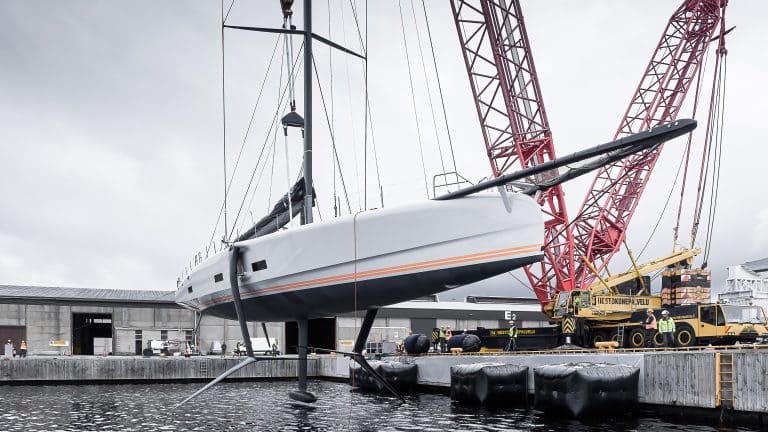
BALTIC 111 RAVEN OFFICIALLY LAUNCHED AHEAD OF FOILING TRIALS
As Raven prepares for her much-anticipated foil-assisted sailing trials, equal attention is being paid to her interior which combines dramatic...
Ferretti Yachts and Riva to attend Moscow Boat Show 2013
- Inspiration
Related News
Popular news this week, popular news this month, latest news.
- Yacht Charter & Superyacht News >
Written by Zuzana Bednarova
To be represented by Premium Yachts, Ferretti Yachts and Riva , two prestigious brands of the Ferretti Group, will be present at the Moscow International Boat Show 2013, displaying motor yacht Ferretti 530 as well as Riva Iseo yacht tender.
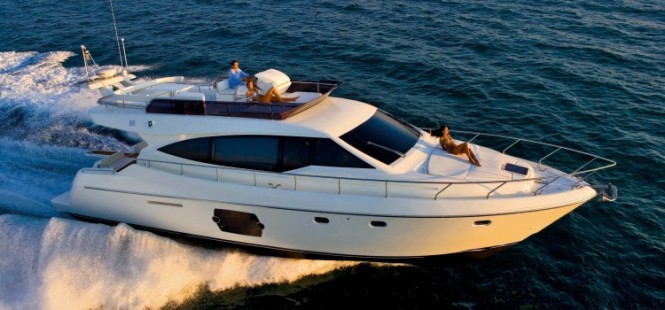
Luxury motor yacht Ferretti 530
Luxury yacht Ferretti 530 was very keen to undertake in collaboration once again with AYT – Advanced Yacht Technology, Ferretti Group Engineering Division and Studio Zuccon International Project . The compact dimensions, 16 meters long and almost 5 meters wide, allow the 530 yacht to deliver grand Italian luxury and cruising immersed in such comfort until now unheard of in a yacht of this size.
Ferretti 530 yacht boasts three revolutionary innovations: the full beam master cabin with chaise longue and two large open view windows that make it a real suite at sea level bathed in light, tones and the natural essences of teak. Moving the galley from the center to the aft section creates a unique open space that includes the saloon, galley, cocktail bar and the dining area, the cockpit area continues thanks to the tilting window. The roll bar free sky lounge and the spoiler allow the 530 a sporty appearance combined with elegantly formal lines.
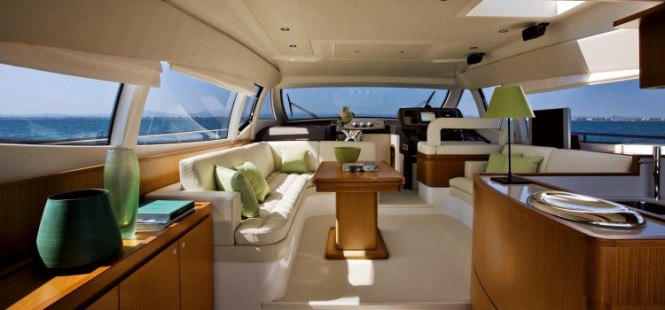
Ferretti 530 Yacht - Interior
Riva , the iconic Ferretti Group brand, presented a new model at the historical Lake d’Iseo shipyards in July 2011. Featuring elegance and ease of transportation as its distinctive characteristics, Iseo superyacht tender , a 27 foot runabout, is destined to become a must-have for those who love cruising on both lakes and the sea, and, most importantly, design enthusiasts. It is also perfect for anyone wishing to enhance their yacht with an exclusive tender that will never go unnoticed.
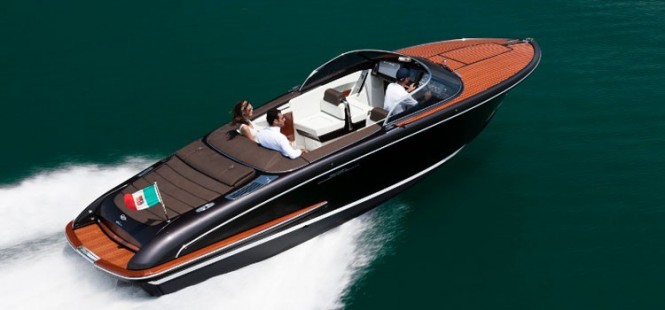
Riva Iseo superyacht tender
Due to its ease of manoeuvrability and size, Iseo yacht tender is also ideal as a tender for large yachts. Innovative and elegant, it can also guarantee comfort in bad weather conditions. Besides the electrohydraulic bimini top, it was also designed with a waterproof, automobile-style soft top which protects those on board against water and the wind during cruising.
Please contact CharterWorld - the luxury yacht charter specialist - for more on superyacht news item "Ferretti Yachts and Riva to attend Moscow Boat Show 2013".
- Charity & Fund Raising
- CharterWorld News
- Classic Yachts
- Coronavirus
- Cruise Ship
- Ecological Yachts
- Expedition Yachts
- Expert Broker Advice
- Feature Superyachts
- Interior Design
- Legal & VAT Yacht Issues
- Luxury Catamarans
- Luxury Gulet
- Luxury Phinisi
- Luxury Trimarans
- Luxury Yacht Design
- Luxury Yachts
- Marinas & Harbours
- Marine Ecology
- Marine Electronics
- Marine Equipment
- Mega Yachts
- Modern Yachts
- Motor Yachts
- New Launch Yachts
- New To Charter
- Open Style Sports Yachts
- Private Jets
- Sailing Yachts
- Social Media
- Sports Yachts
- Superyacht Crew
- Superyacht Photographers
- Superyacht Products & Supplies
- Superyacht Refits
- Superyacht Reviews
- Superyachts
- Uncategorized
- Yacht Builders
- Yacht Charter
- Yacht Charter Destinations
- Yacht Charter Picks
- Yacht Charter Specials
- Yacht Delivered to Owner
- Yacht Designers
- Yacht Events & Boat Shows
- Yacht Fashion
- Yacht Industry News
- Yacht Photos
- Yacht Racing
- Yacht Racing & Regattas
- Yacht Safety Equipment
- Yacht Support Vessels
- Yacht Tenders
- Yacht Videos
- Yachting Associations
- Yachting Awards
- Yachting Business
- Yachts For Charter
- Yachts For Sale
Quick Enquiry
Superyacht news:.
Email Your Yachting News to: news @ charterworld.com
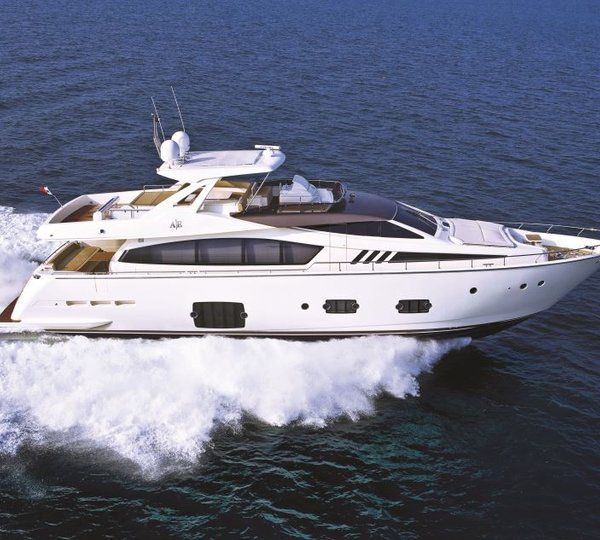
Ferretti Yachts
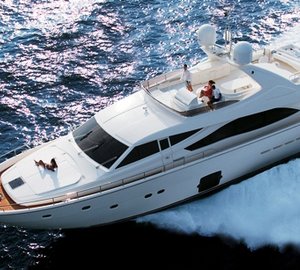
Ferretti Group announces its presence at Moscow Boat Show 2013
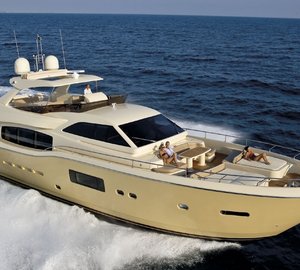
Ferretti Group attending Hong Kong Gold Coast Boat Show 2014
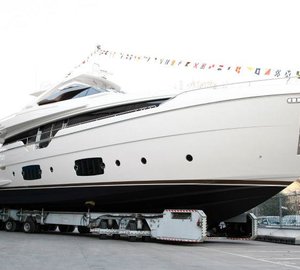
Ferretti Group Days 2013 to be marked by premiere of Ferretti 960 Yacht
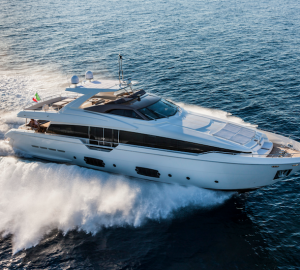
Ferretti Group to deliver first Ferretti 960 superyacht and Riva 86 Domino yacht to Hong Kong by mid-December
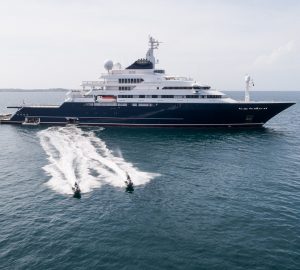
10 sensational superyachts with spectacular swimming pools
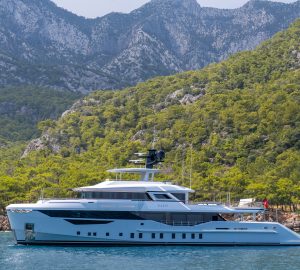
Superyacht KAŞIF on route to the 2024 Cannes and Monaco Yacht Shows
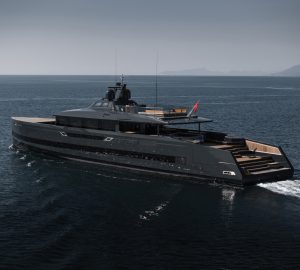
45m custom superyacht SAN will debut at the 2024 Monaco Yacht Show
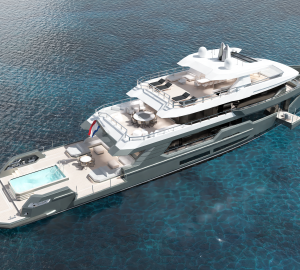
Leapher Yachts unveils 49m luxury explorer yacht NAVIX50
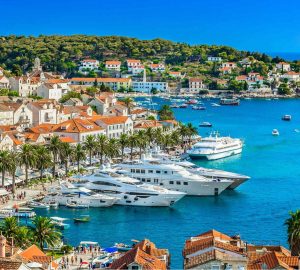
Inaugural CROYA Charter Show announced for 4th to 6th October 2024 in Split, Croatia
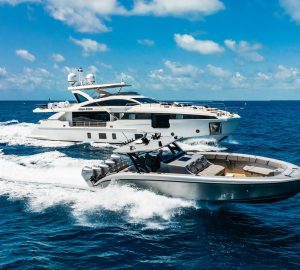
31m luxury yacht CARPE DIEM available for charter in the Bahamas

OCEA delivers 33m motor yacht ARAOK II to her new owner
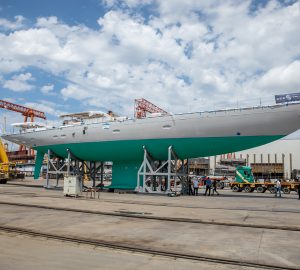
39m sailing yacht LINNEA AURORA launched by SES Yachts
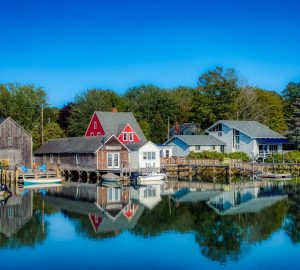
A luxury charter yacht is the perfect way to encounter New England’s fall foliage display
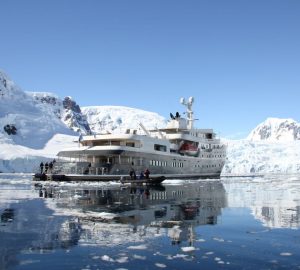
Charter yachts offering citizen science opportunities around the world
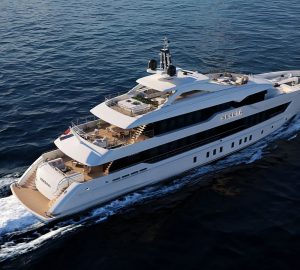
55m superyacht YN20555 is launched by Heesen Yachts and named superyacht SERENA
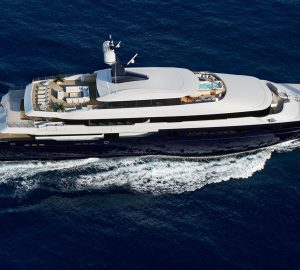
Late summer special offer on board 72m superyacht ARBEMA in the Western Mediterranean

Search boats for sale
Balticat Werft - new boats for sale


IMAGES
COMMENTS
Baltic Yachts | Lighter, stiffer, faster - together
Baltic 46 Queen Anne (originally named Diva) - the first ever Baltic yacht . Her presence is doubly significant because she not only demonstrates the sustainability of yachts Baltic built 50 years ago, using what was then the latest boat building technology like balsa sandwich construction, unidirectional glass fibre and tank tested design, but she also illustrates the story of Baltic's ...
Baltic Yachts ist ein 1973 gegründeter Hersteller von Luxus-Segelyachten mit Sitz in Jakobstad, Finnland. Geschichte Baltic ... Die ursprüngliche Werft befindet sich in Larsmo und 2009 eröffnete Baltic Yachts eine große Werfthalle in Jakobstad, im Hafen von Alholmen.
The company also completed a significant refit of the Baltic 175 Ravenger, transforming the world's largest full-carbon composite sloop from a cruiser into a high-performance sailing yacht. Upcoming projects include the Baltic 121 Custom, a world cruiser designed by Malcolm McKeon set for 2026 delivery, and the fourth hull in the Baltic 68 ...
BALTIC 46 QUEEN ANNE - REFIT. The first yacht built by Baltic Yachts was designed by C&C Design in Canada with the interior layout and styling done by our own in-house design team. The Baltic 46 was designed for comfortable living on board and was aimed at the racing fraternity as well as the cruising minded. Previous.
To book an appointment to view the Baltic 85 Mini Y please contact . Back in Finland, Baltic Yachts is concluding a highly successful launch season and looking to the future. Two new yachts were delivered over the summer: the Baltic 80 Emma, which is a maxi cruiser-racer designed by judel/vrolijk and the third Baltic 68 Café Racer.
The company helps to build large converter platforms near the Baltic port of Rostock that are needed to feed electricity from offshore wind parks into the grid. Meyer Werft on Aug. 12 announced a ...
Meyer Wismar (former VEB Mathias-Thesen-Werft Wismar, Aker MTW Werft, Wadan Yards MTW, Nordic Yards Wismar) is a German shipbuilding company, headquartered in Wismar.After June 1, 1990 it was part of the Deutschen Maschinen- und Schiffbau AG (DMS AG), [1] from 2009 it was part of the Nordic Yards Holding GmbH, [2] and in 2016 it became part of the Lloyd Werft Group.
Werft aus Finnland: Baltic Yachts feiert 50. Geburtstag. Baltic Yachts verschiebt im finnischen Norden seit 50 Jahren die Grenzen des Komposit-Yachtbaus. Über Serien- und Regattaboote öffnete sich der Zugang zum Markt der Supersegler. Den Winter des Jahres 1973 läutete in Bosund unaufhörlicher Schneefall ein.
The arduous and exacting process of removing and destroying more than 1.5 million tonnes of volatile munitions from the Baltic and North Sea basins—an area roughly the size of West Virginia—is ...
Three warships from Russia's Baltic Fleet have arrived in Cuban waters, Moscow's second such maritime voyage in as many months in a reflection of deepening ties between Moscow and Havana.
Baltic 40 ALOHA Werft Baltic Yachts Designer judel/vrolijk & co Typ Cruisers Model 40 Baujahr 1994 Länge 12 m ... The offered Baltic 40 ALOHA is hull no. 16 built in 1994 for a German Client who still owns her today. ALOHA still recevied the same care and maintenance as on the first day. She is in immaculate condition inside-out. For shallow draft
Werft Baltic Yachts Designer judel/vrolijk & co Typ Cruisers Model 78 Baujahr 2008 Länge 23.99 m Breite 5.99 m Tiefgang 4.13 m Liegeplatz IT Preis 2.490.000 € versteuert TURCONERI WILL BE EXHIBITED DURING THE PALMA INTERNATIONAL BOAT SHOW 25.-28.04.2024 For sale is the high-performance custom Baltic 78 TURCONERI ex ANTONIA from 2008
The list of potentially secret gifts also includes a loan of more than $267,000 provided by Thomas' close friend Anthony Welters, the yacht trip to Russia from the Baltics, and the helicopter ...
Baltic 43 ICE Werft Baltic Yachts Designer judel/vrolijk & co Typ Daysailers Model 43 Baujahr 2007 Länge 13 m Breite 3.18 m Tiefgang 3.2 m Liegeplatz AG Preis 290.000 € versteuert Iconic Daysailer Baltic 43 ICE for sale! It is not uncommon for owners of larger yachts to commission smaller sailing boats for easy, short-handed day sailing. ICE ...
Baltic Yachts will be working with a highly skilled team assembled by designer Jarkko Jämsén, and including in-demand Spanish race boat naval architects Botin Partners, and with structural engineering provided by PURE Design and Engineering. Project Manager Sam Evans and project Co-ordinator Mattias Svenlin will lead Baltic's internal team ...
Baltic 60 diseñado por Rolph Vrolijk con el objetivo de ser competitivo en los campos de regatas del Mediterráneo, sin desdeñar ofrecer a su propietario cruceros agradables y largos. El objetivo de este barco de 60 pies era crear un barco verdaderamente de doble propósito optimizado tanto para cruceros como para carreras.
Are you looking for Balticat Werft boats for rent? Would you like to charter a boat of Balticat Werft in your next boating holiday? Happycharter, your expert for boat rental and yacht charter offers you a big data base with charter yachts of various owners. Are you looking for a charter boat (eg. Balticat Werft)? You can contact the boat owner ...
View the broad range of Balticat Werft for sale in your area on offer in your area, review the detailed information about each vessel, compare prices, and uncover the best Balticat Werft deals 2002 Balticat Werft 42C for sale
Sailboat / sailing catamaran: Balticat Werft, used boat, wooden boat Length x beam: 12.12 m x 6.30 m, 12.12 x 6.30 m built: 1993, cabins: 3 Engine: Lombardini, 2 x 30 hp (22 kW), diesel € 195,000 Location: Portugal 1993
Launch & Sea trials. Baltic 111 Raven is a remarkable study in functional and aesthetic design overlaying the most advanced sailing systems ever seen in a superyacht. Watch the final stages of Raven's two-year build and trials period at the yard in Finland before she left for training and testing in warmer climates.
View a wide selection of Balticat Werft for sale in your area, explore boats details information, compare prices and find Balticat Werft best deals 2002 Balticat Werft 42C for sale Balticat Werft
Luxury yacht Ferretti 530 was very keen to undertake in collaboration once again with AYT - Advanced Yacht Technology, Ferretti Group Engineering Division and Studio Zuccon International Project.The compact dimensions, 16 meters long and almost 5 meters wide, allow the 530 yacht to deliver grand Italian luxury and cruising immersed in such comfort until now unheard of in a yacht of this size.
New boats for sale of Balticat Werft - new models and boats and yachts that have not yet been in water.